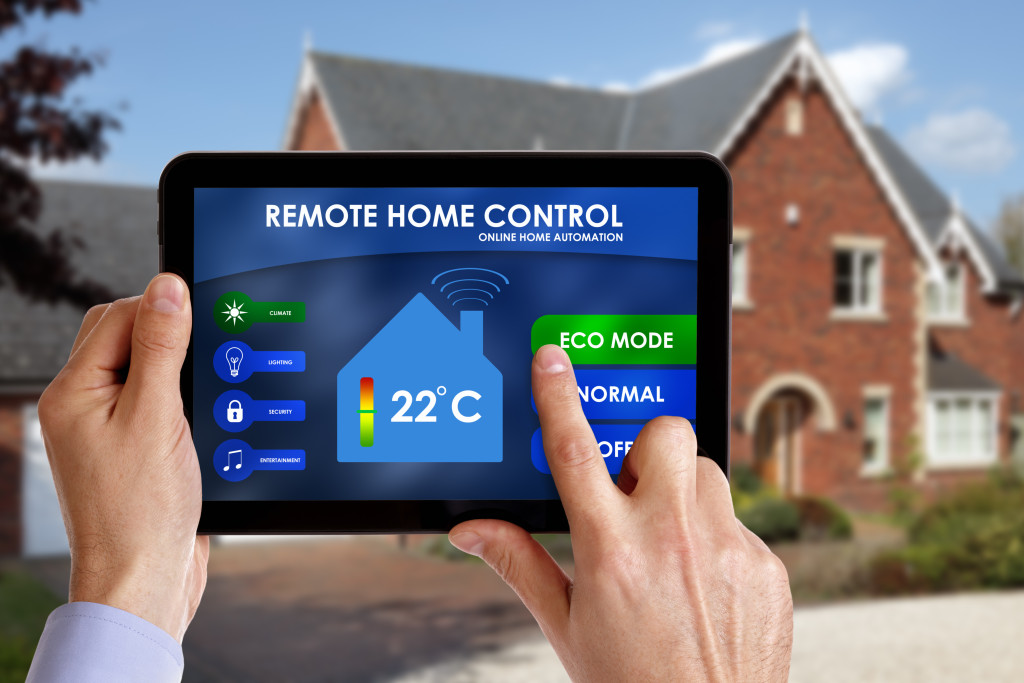Your home is getting smarter, and that’s a good thing. You can control your heating from your phone when you’re working late. You can stream music through rooms that used to be quiet. With a smart lock on the front door, you can let your neighbor in while you’re at work.
It seems like there’s a new device every day, and it’s getting harder to keep track of them all. Some sensors know when your home is too hot or too cold. You can control your lights with a voice command, and you can unlock the door for friends using your phone.
But have you ever thought about how everything seems to be working in harmony? How do smart homes work?
The concept of smart technology revolves around the Internet of Things (IoT). The IoT is simply a series of devices connected to the internet. Using cloud computing, these devices can interconnect and share data.
Smart technology also makes use of artificial intelligence. With the right system, your home can analyze data and learn what you like. For instance, if it’s 10 PM, your smart thermostat might realize that you’re not at home and turn down the heat to save on energy costs.
Common Problems with Smart Homes
Smart homes are supposed to make life easier for homeowners with busy lifestyles. But they don’t mean you won’t encounter problems anymore. As a homeowner, you need to watch out for the following:
1. Smart Devices Cannot Connect to the Network
Sometimes smart devices cannot connect to the internet. This means that you might not be able to control them remotely or receive data about their use.
One common cause for this is a weak connection between your router and the device in question. Make sure there isn’t anything blocking the path, such as thick walls or furniture.
If you didn’t connect your router to your modem correctly, you’d have the same problem. The connection between these two is critical for connecting everything else.
Suppose your smart devices are connected but are not working correctly. In that case, there’s a compatibility issue with the device or its operating system. You may need to get in touch with customer service.
2. Your Automatic Garage Doors Won’t Open
Automatic garage door openers will allow you to control your gate from a smartphone. However, if the Wi-Fi signal is weak inside the garage, the device might not connect to its cloud server.
If your garage door isn’t working on its own, check with the manufacturer about integrating it with your existing opener. You can also call experts for garage panel door repairs and check if some panels are causing your system to malfunction. Sometimes the reason isn’t internet-related but due to issues with one or some parts of the automatic garage. These include tracks, rollers, springs, and more.
3. It Will Not Communicate with Other Devices
If all smart devices can communicate but do not work, the problem could be how you installed them.
You need to assign each device a different IP address to ensure that they’ll work correctly individually. That means that no two devices should have the same number. Suppose you enter an incorrect number or forget what code was assigned. In that case, you can disrupt communication between all of your devices.
4. Lights Turn On Randomly or Won’t Turn Off

Lighting is essential for home safety, but turning them on and off manually can take away from convenience. That’s where smart lighting comes in. However, if the device turns itself on without any command, there’s a problem with the system.
One reason for this is smart lights couldn’t switch off while you were away. If one of your devices goes offline while you’re out, it might remain on when you get home and no longer respond to commands. It will also use up energy even if it’s not needed.
These problems can occur because of compatibility issues between your devices. This is common with smart lighting because there are many types of bulbs and switches. Some don’t work properly when paired with competing brands.
Miscellaneous Problems and Fixes
You also need to be wary of using different networks for different gadgets, such as wireless routers and Bluetooth connectivity. Using too many connections can overload your wireless router.
You can solve these problems by using a smart hub, which acts as the central control panel for all of your devices. An easy DIY solution is setting up a WeMo Switch with Alexa. It will allow you to turn off anything that’s connected to it without having to get up from the couch or step out of bed.
Smart devices in smart homes are the way of the future. But that doesn’t mean that it’s foolproof. You’ll still need to keep an eye on the things discussed in this article so you can keep your systems working at optimum levels.


